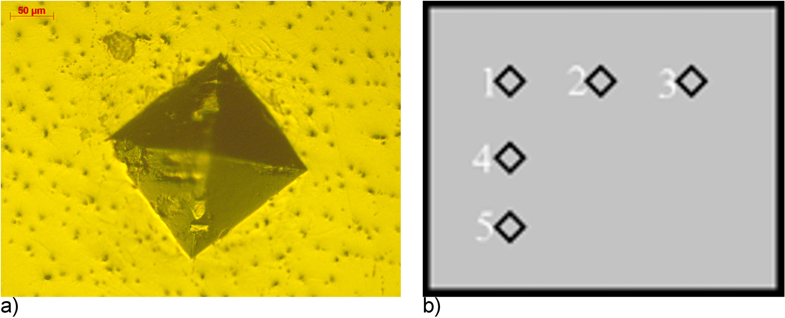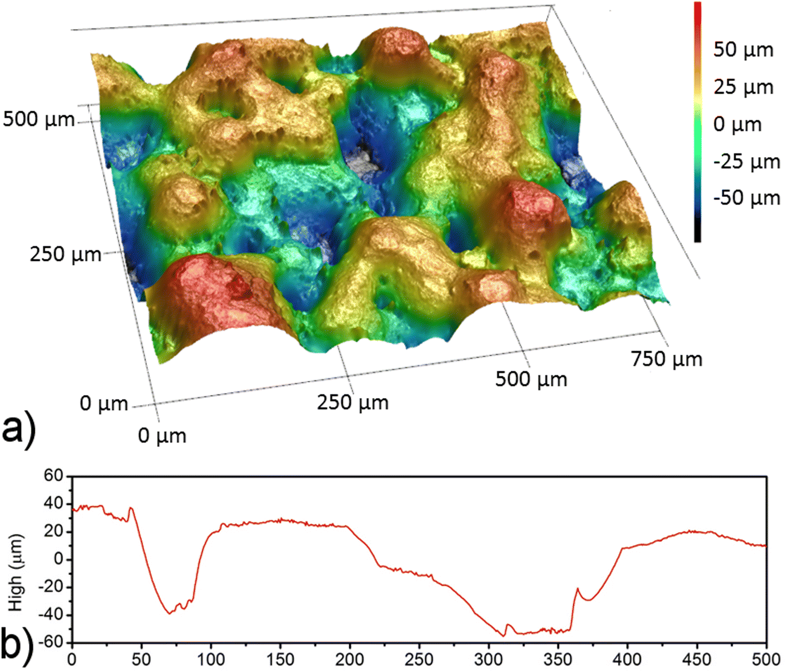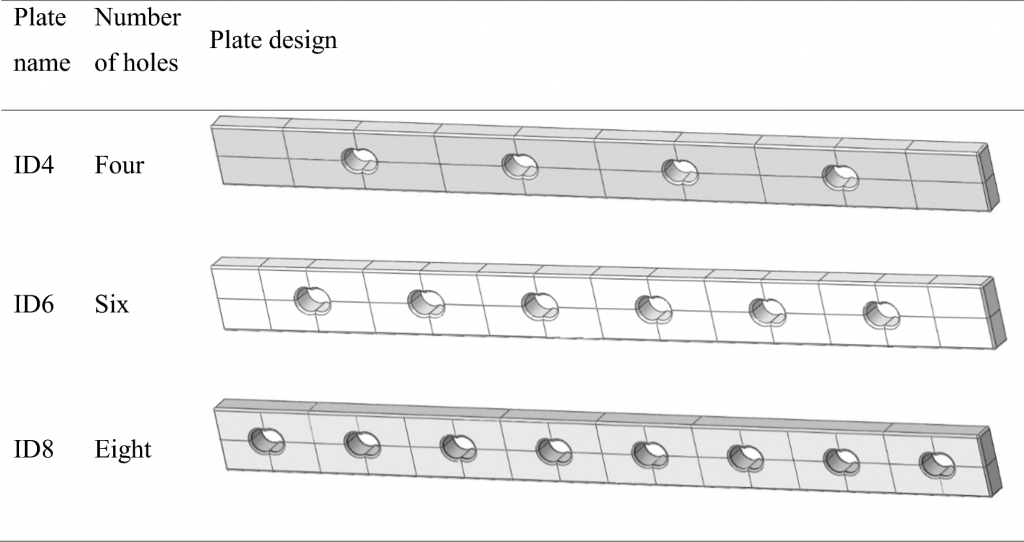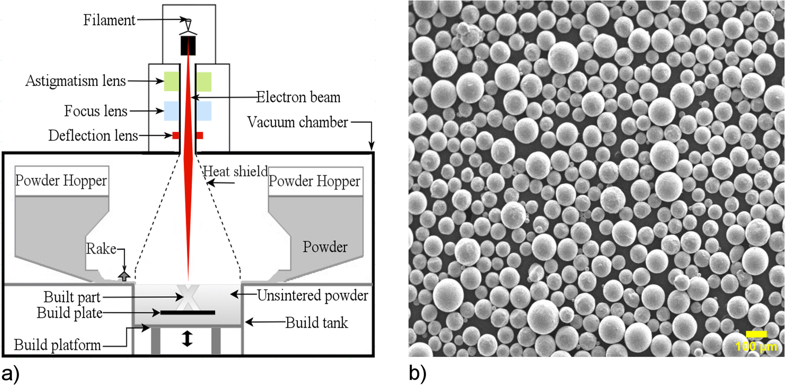Researchers from Saudi Arabia and Manchester, UK explore the creation of bone plates via electron beam melting (EBM) processes, outlining their findings in the paper ‘Topology optimised metallic bone plates produced by electron beam melting: a mechanical and biological study.’
Authors Abdulsalam Abdulaziz Al-Tamimi, Boyang Huang, Cian Vyas, Miguel Hernandez, Chris Peach, and Paulo Bartolo remind us that while metallic bone plates may be commonly implanted after fractures, there are some major disadvantages—and mainly due to implant/bone mismatch which could restrict the healing process. Using EBM, the research team was on a mission to create plates with decreased stiffness but similar mechanical properties.
While locking compression plates are often used to treat bone fractures, challenges may be encountered when it is time for such implants to be removed. In some cases, they may even cause a re-fracture or damage to nerves. There is always the option of leaving the implant, but the researchers point out that this scenario offers the risk for corrosion, the release of metal ions into the body, and even the possibility of patient reactions to materials which may be carcinogenic. To improve on these options, the researchers combined the following in their study:
- Additive manufacturing
- Computer modeling
- Simulation
- Optimization
During this study, the experimental plates were created using Materialise Magics software, and then exported into Build Assembler for slicing and uploading. The researchers also created support structures for the plates to add stability, as well as prevent thermal stress and warping. The EBM Arcam A3 was used for fabrication of the plates.
Great care was taken not only to prevent mechanical failure but also deformation. Stiffness values characterized the bones plates, with four, six, and eight holes. In each sample, the researchers noted stiffness reduction after an increase in volume reduction.
“A good approximation between numerical and experimental results was also obtained, showing that the computational tools considered in this research represent a viable approach to design and simulate their behavior before expensive fabrication and experimental steps,” stated the researchers. “Results also show that topology optimization is a viable tool to redesign bone plates, reducing their equivalent stiffness and consequently the stress shielding effect.”
The study was restricted in ‘considering the mechanical stability of the topology optimized bone plates,’ but the researchers are addressing that with analysis of the plastic regions.
“Most of the bone plates presented a higher yield stress with two plates (four-hole 75% volume reduction and six-hole 25% volume reduction plates) showing similarity with the commercial ones in terms of yield behavior. The resulting yield stresses for the two bone plates that have similar equivalent Young’s modulus to the cortical bone showed approximately half of the commercial bone plate yield. However, if we consider that the maximum force required to yield the two bone plates are 4191 N (six holes and 75% of volume reduction) and 5481 N (eight hole and 75% of volume reduction), this is still clinically acceptable as it corresponds to 6 to 8 times the bodyweight of a 70-kg patient,” stated the research.

Surface hardness measurement. a Hardness indentation on the EBM bone plate sample. b Indentation measurements
The plates fabricated via EBM were not required to undergo any post-processing at all. This meant the elimination of:
- Residual stresses
- Surface finishing
- Polishing
Because of the resulting surface roughness, there was good cell attachment, leading the researchers to believe that a lack of polishing was positive overall.
“Cell viability studies also show a significant number of dead cells in the commercial plates after 14 days of cell seeding compared to the EBM plates,” stated the researchers. “This can be partially explained by the surface topography of the commercial bone plates. However, further investigation is required to elucidate the role that ion release and wettability have on cell interactions.”
In conclusion, the researchers pointed out that EBM parts lacking in post-processing treatment were also more biocompatible than commercial plates.
While 3D printing has lent its magic to nearly every industry today in some form, the medical field has been impressively impacted—and especially in the areas of surgical implants, devices, and models. Researchers have been able to create unbelievable new options for patients, from dissolvable magnesium implants to self-folding implants, and even antibacterial 3D printing filament for creating safe medical devices. Find out more about bone plates created through EBM processes here.
What do you think of this news? Let us know your thoughts! Join the discussion of this and other 3D printing topics at 3DPrintBoard.com.

Surface hardness measurement. a Hardness indentation on the EBM bone plate sample. b Indentation measurements
Subscribe to Our Email Newsletter
Stay up-to-date on all the latest news from the 3D printing industry and receive information and offers from third party vendors.
Print Services
Upload your 3D Models and get them printed quickly and efficiently.
You May Also Like
Heating Up: 3D Systems’ Scott Green Discusses 3D Printing’s Potential in the Data Center Industry
The relentless rise of NVIDIA, the steadily increasing pledges of major private and public investments in national infrastructure projects around the world, and the general cultural obsession with AI have...
3DPOD 260: John Hart on VulcanForms, MIT, Desktop Metal and More
John Hart is a Professor at MIT; he´s also the director of the Laboratory for Manufacturing and Productivity as well as the director of the Center for Advanced Production Technologies....
Etsy Design Rule Change Reduces Selection of 3D Printed Goods
Online marketplace Etsy has implemented a rule change requiring all 3D printed goods on the site to be original designs. The update to the site’s Creativity Standards states, ¨Items produced using...
E-Beam OEM Wayland Additive Partners with USC Racing to 3D Print Titanium Exhaust Collector
Every year, standards organization SAE International holds a competition called Formula SAE, in which students from both undergraduate and graduate programs design, build, and race small formula-style race cars. For...



































